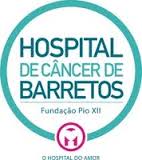Barretos Cancer Center of Brazil – The Asymmetric War On Cancer
February 27, 2014 1 Comment
 I recently returned from a lecture tour at the Barretos Cancer Center of Brazil located 300 miles from Sao Paulo. This cancer center, founded in 1968, has become one of the world’s leading programs for the diagnosis and treatment of malignant disorders. Before this small town became famous for cancer care, however, it was a recognized site for rodeos. The city of Barretos sits in the middle of Brazil’s agricultural region with sugar cane and cattle the principal industries. The hospital itself is a charity where all care is delivered free of charge. Patients from all over the country arrive by bus and ambulance to undergo high-level diagnostic, surgical and medical treatment. Much of the funding comes from the government, but a large amount of the money comes from charitable donations in the form of cattle that are auctioned off to provide money. In addition, donations from the leading musicians of the nation, including Michel Telo, help in the fundraising efforts.
I recently returned from a lecture tour at the Barretos Cancer Center of Brazil located 300 miles from Sao Paulo. This cancer center, founded in 1968, has become one of the world’s leading programs for the diagnosis and treatment of malignant disorders. Before this small town became famous for cancer care, however, it was a recognized site for rodeos. The city of Barretos sits in the middle of Brazil’s agricultural region with sugar cane and cattle the principal industries. The hospital itself is a charity where all care is delivered free of charge. Patients from all over the country arrive by bus and ambulance to undergo high-level diagnostic, surgical and medical treatment. Much of the funding comes from the government, but a large amount of the money comes from charitable donations in the form of cattle that are auctioned off to provide money. In addition, donations from the leading musicians of the nation, including Michel Telo, help in the fundraising efforts.
We arrived at Ribeiro Preto airport where we were met by a driver who brought us the 1-1/2 hour trip to Barretos. I was accompanied by a reconstructive plastic surgeon who was donating a month of her time to the Barretos program. The following morning, the director of the program, Dr. Andre Lopes Carvalho, brought me to the hospital for the lecture. The audience consisted of MDs and MD/PhDs, with many scientists and technical staff. It was well received and followed by a small coffee reception.
From there, the Director of Molecular Biology and the Chief of Pathology gave me a tour of the facility. There, in the center of Brazil was a sophisticated research institution with every capability. DNA sequencing performed on Illumina and Ion Torrent equipment. In a tour of the pathology department I was shown archived blocks from tens of thousands of cancer patients, all maintained in a central repository. My discussion with the Chief of Pathology, Dr. Cristovam Scapulatempo-Neto, was most instructive.
It must be remembered that Brazil is a nation of stark contrasts, on the one hand, abject poverty and on the other, extreme wealth. The dilemma for the medical system is to deliver care that meets the needs of the greatest number of patients at the lowest possible cost. Dr. Scapulatempo-Neto confronts an almost impossible dilemma. He cannot possibly afford the companion diagnostics so common in America, which match patients to the drugs of interest under FDA regulation, like the COBAS BRAF mutation test for Vemurafenib or the VYSIS ALK Break Apart FISH probe for Crizotinib. At several thousand dollars per test, these tests are beyond the reach of the Brazilian system. More to the point, many of the drugs are not covered by the national insurance.
To address the need, this physician has redoubled his efforts in immunohistochemistry. This technique uses special stains and antibodies to measure the presence or absence of proteins. Unlike DNA tests, which identify amplifications and mutations, immunohistochemistry identifies the end-product, the business end of cancer abnormalities. I was amazed by the accuracy and affordability of these increasingly sophisticated IHC tests. While a COBAS or VYSIS test might run thousands, he can conduct high quality IHC for 100 dollars. With a medical center that sees 10,000 new cancer patients per year, the cost savings are significant.
I realized that this was indeed an asymmetric war on cancer; low tech answers to high tech problems. I became increasingly enthusiastic about the prospect of utilizing our EVA-PCD platform in this population. After all, these medically indigent patients are barely able to receive even standard cytotoxic chemotherapies, only generic drugs, and very few newer classes of agents are available. The cost saving associated with doubling responses and restricting futile care could be enormous. While gene sequencing technologies become faster, better, and less expensive, the information that they provide for most common malignancies remains to be determined. A practical, comparatively inexpensive tissue culture platform capable of testing both cytotoxic drugs and targeted agents would be a remarkable step forward for the population in Brazil. It is my hope to collaborate with this group and bring our technology to the Brazilian population.


